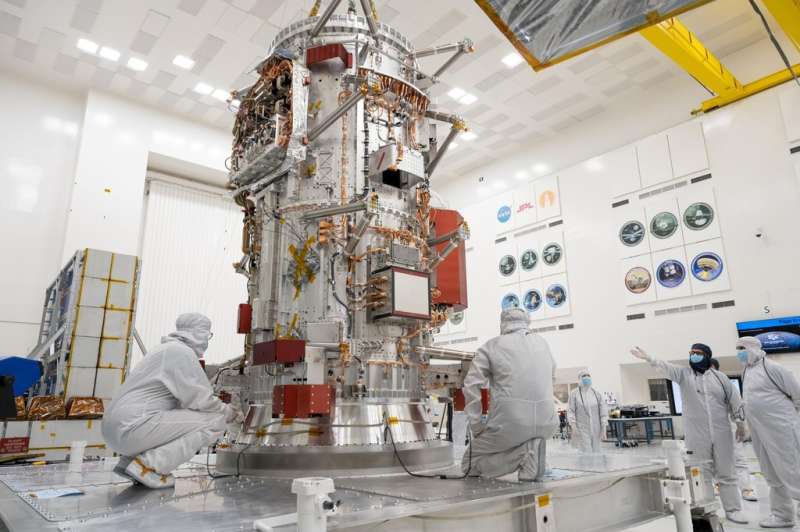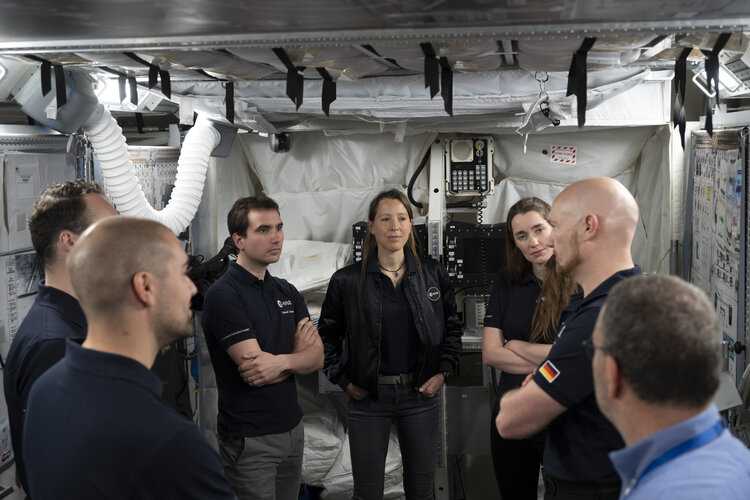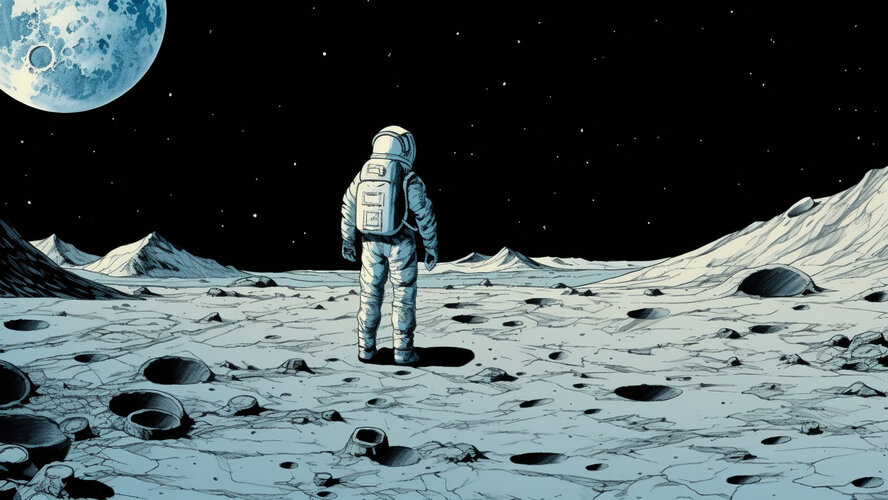
Copernical Team
Euclid arrives at launch site

ESA’s Euclid spacecraft finished its ocean cruise safe and sound on 30 April at Port Canaveral in Florida. Subsequently, the satellite was moved by road to the Astrotech facility near Cape Canaveral.
New video series captures team working on NASA's Europa Clipper

Destined for Jupiter's icy moon Europa, the Europa Clipper spacecraft—the largest NASA has ever flown on an interplanetary mission—is being readied to launch in October 2024. Between now and then, thousands of hours of work will go into assembling and testing the spacecraft to ensure it's hardy enough to survive a six-year 1.6-billion-mile (2.6 billion kilometer) journey and sophisticated enough to perform a detailed science investigation of this mysterious moon.
Watch live: ESA's class of 2022 astronaut candidates first news conference

Join the webinar on Accessibility in Human Spaceflight

What are the next steps for making human spaceflight more inclusive, accessible, and safer? How can designing for space accessibility improve accessibility on Earth? Where does ESA’s parastronaut feasibility project stand?
On Thursday, 11 May 2023 at 15:00-17:00 CEST, join the webinar organised by ESA’s Advanced Concepts Team and ESA’s Chief Diversity Officer, with the support of the non-profit BIRNE7 e.V.
Meet Dieter Pilz, new Director of Technology, Engineering and Quality
 Video:
00:06:46
Video:
00:06:46
Dr Dietmar Pilz is ESA’s new Director of Technology, Engineering and Quality (D/TEC), and Head of ESTEC in Noordwijk, the Netherlands.
Dr Pilz has over 20 years of professional experience in the European and international aerospace industry, in various engineering and programme management positions in the defence and security sectors and the space community.
In air dominance, the past and future converge
 It was the early 1990s, and the fighter jet, approaching 20 years old, had been sidelined on missions where the targets were farther than the pilot could see.
Then came the AIM-120A AMRAAM missile, which could seek and strike targets beyond visual range.
"It was a complete game-changer for the way we operationally employed the F-16," said retired U.S. Air Force Maj. Gen. Jon Norman,
It was the early 1990s, and the fighter jet, approaching 20 years old, had been sidelined on missions where the targets were farther than the pilot could see.
Then came the AIM-120A AMRAAM missile, which could seek and strike targets beyond visual range.
"It was a complete game-changer for the way we operationally employed the F-16," said retired U.S. Air Force Maj. Gen. Jon Norman, US Army awards $4.7B production contract for all-weather GMLRS rockets
 The U.S. Army has awarded Lockheed Martin (NYSE: LMT) a Not-to-Exceed $4.79 billion contract to manufacture two full-rate production lots of GMLRS rockets and associated equipment.
The contract calls for the production of GMLRS Unitary and Alternative Warhead (AW) rockets and integrated logistics support for the U.S. Army and international partners.
"We are working closely with our A
The U.S. Army has awarded Lockheed Martin (NYSE: LMT) a Not-to-Exceed $4.79 billion contract to manufacture two full-rate production lots of GMLRS rockets and associated equipment.
The contract calls for the production of GMLRS Unitary and Alternative Warhead (AW) rockets and integrated logistics support for the U.S. Army and international partners.
"We are working closely with our A Boeing reports another loss in Q1, but confirms forecast
 Boeing reported a bigger-than-expected quarterly loss Wednesday due to persistent quality control problems with its jets, but shares rallied as it maintained key medium- and long-term targets.
The company reported a loss of $425 million, compared with a $1.2 billion loss in the year-ago period, reflecting the continued drag from supply chain issues across its commercial and defense businesse
Boeing reported a bigger-than-expected quarterly loss Wednesday due to persistent quality control problems with its jets, but shares rallied as it maintained key medium- and long-term targets.
The company reported a loss of $425 million, compared with a $1.2 billion loss in the year-ago period, reflecting the continued drag from supply chain issues across its commercial and defense businesse Chia Network and SpaceKnow secure spatial data and analytics for AgroTech sector
 Chia Network and SpaceKnow have announced a collaboration to unlock actionable intelligence and data from space for the benefit of sustainability efforts, beginning with the AgroTech industry. SpaceKnow and Chia will build and maintain a geospatial database to track land enrollment in sustainability programs, secured using Chia's Virtual Private Blockchain approach to create a trusted database t
Chia Network and SpaceKnow have announced a collaboration to unlock actionable intelligence and data from space for the benefit of sustainability efforts, beginning with the AgroTech industry. SpaceKnow and Chia will build and maintain a geospatial database to track land enrollment in sustainability programs, secured using Chia's Virtual Private Blockchain approach to create a trusted database t On the Edge: NASA's last S-MODE mission studies the ocean's surface
 The mission is gathering observations with airborne sensors, a research ship, and autonomous instruments like gliders that skim the upper layers of the Pacific Ocean.
NASA has taken to the seas and skies to study the unique environment at the ocean's surface, where marine ecosystems intersect with our planet's complex atmosphere. On April 7, scientists participating in the Sub-Mesoscale Oc
The mission is gathering observations with airborne sensors, a research ship, and autonomous instruments like gliders that skim the upper layers of the Pacific Ocean.
NASA has taken to the seas and skies to study the unique environment at the ocean's surface, where marine ecosystems intersect with our planet's complex atmosphere. On April 7, scientists participating in the Sub-Mesoscale Oc 